Embarking on the Kyoto Heritage Path from Fushimi Inari Taisha Shrine to Kiyomizu-dera Temple offers a captivating blend of spirituality and natural wonders. The enigmatic allure of the torii gates at Fushimi Inari, accompanied by the presence of fox statues and symbolic offerings, sets the stage for a journey steeped in mystery. As visitors traverse the winding trails towards Kiyomizu-dera Temple, a sense of tranquility envelopes them, promising a revelation of ancient traditions harmonizing with the serene beauty of Kyoto’s landscapes.
Good To Know
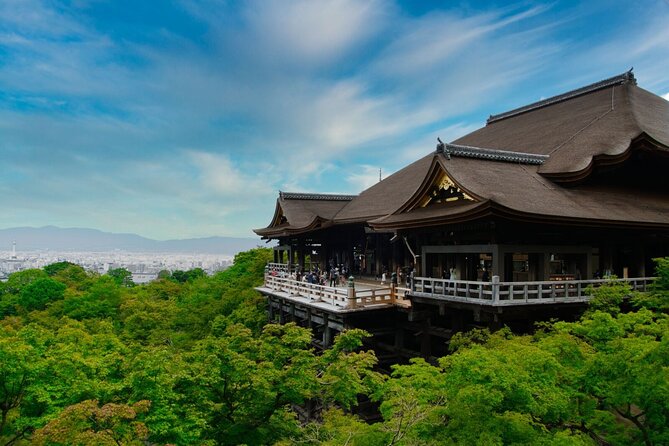
- Fushimi Inari Shrine’s vermillion gates lead to spiritual realm.
- Fox statues and offerings enhance shrine’s mystical ambiance.
- Hiking trails offer scenic views of Kyoto’s natural beauty.
- Kiyomizu-dera Temple features stunning views and sacred rituals.
- Transition from Fushimi Inari’s mystery to Kiyomizu’s ancient tranquility.
Here's some other great tours and experiences nearby we think you'll like.
Fushimi Inari Taisha Shrine
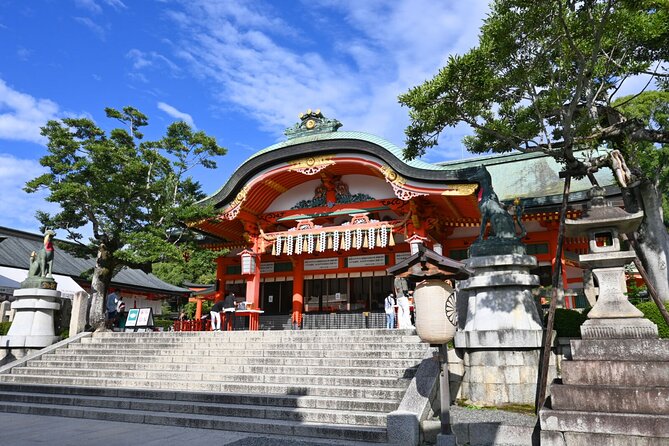
As visitors embark on the Kyoto Heritage Path journey, the first captivating stop is the renowned Fushimi Inari Taisha Shrine, a place steeped in mystery and spirituality. This iconic Shinto shrine, dedicated to Inari, the god of rice, agriculture, and business, is famous for its thousands of vibrant vermillion torii gates that wind through the forested Mount Inari. Visitors are greeted by fox statues, believed to be messengers of Inari, at the shrine’s entrance.
The complex includes multiple sub-shrines, offering a serene and picturesque setting for exploration. The main shrine dates back to the 8th century and attracts pilgrims and travelers alike. Fushimi Inari Taisha Shrine promises an immersive cultural experience that captures the essence of traditional Japanese spirituality.
Thousand Torii Gates
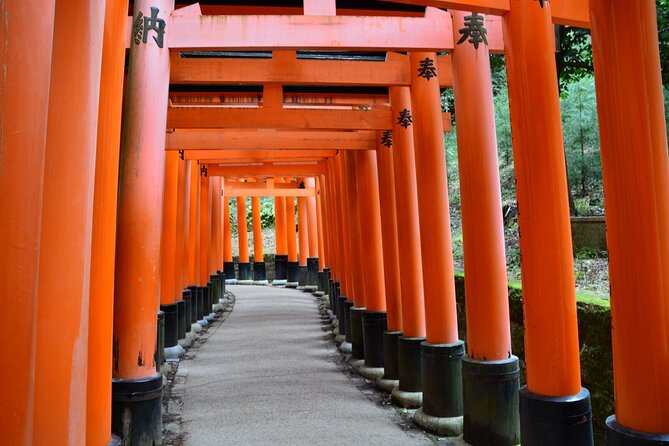
The Thousand Torii Gates at Fushimi Inari Taisha Shrine form a mesmerizing pathway that leads visitors on a symbolic journey through spirituality and nature. These vibrant vermillion gates, known as ‘Senbon Torii,’ line the path up the wooded Mount Inari.
Each gate is donated by individuals or businesses as an offering to Inari, the Shinto god of rice and prosperity. Walking through the tunnel-like structure created by these gates is a unique experience that immerses visitors in a sense of tranquility and reverence.
The torii gates date back centuries and are a prominent feature of the shrine, drawing millions of visitors annually. As visitors pass through each gate, they’re said to be moving from the mundane world to the sacred realm of the deity Inari.
Fox Statues and Offerings
Fox statues and offerings play a significant role in the spiritual practices and traditions observed at Fushimi Inari Taisha Shrine. As visitors traverse the shrine grounds, they’ll encounter numerous statues of foxes, known as ‘kitsune,’ revered as messengers and guardians in Japanese folklore.
These statues symbolize the connection between the shrine and the deity Inari, who’s believed to be the patron of prosperity and success. Devotees often leave offerings of rice, sake, and other food items at the fox statues as a gesture of gratitude and respect, seeking blessings for their endeavors.
The presence of these statues and offerings adds a mystical and enchanting aura to the shrine, inviting visitors to enjoy the rich spiritual heritage of Fushimi Inari Taisha.
Hiking Trails and Scenic Views
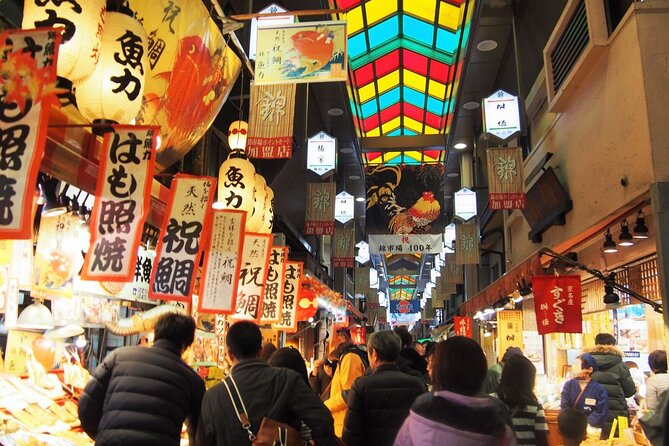
Traversing the winding paths of Fushimi Inari Taisha Shrine unveils a captivating blend of nature’s beauty and spiritual serenity. As visitors hike through the vibrant torii gates, they’re greeted by stunning panoramic views of Kyoto city below.
The trails, surrounded by lush greenery and occasional glimpses of wildlife, offer a peaceful escape from the bustling city. Along the way, hikers can stop at various viewpoints to admire the majestic scenery and take memorable photos.
The higher the ascent, the more breathtaking the vistas become, rewarding adventurers with a sense of accomplishment and a deeper connection to the natural world. Whether exploring solo or in a group, the hiking trails at Fushimi Inari Taisha Shrine promise an unforgettable experience for all.
Kiyomizu-dera Temple
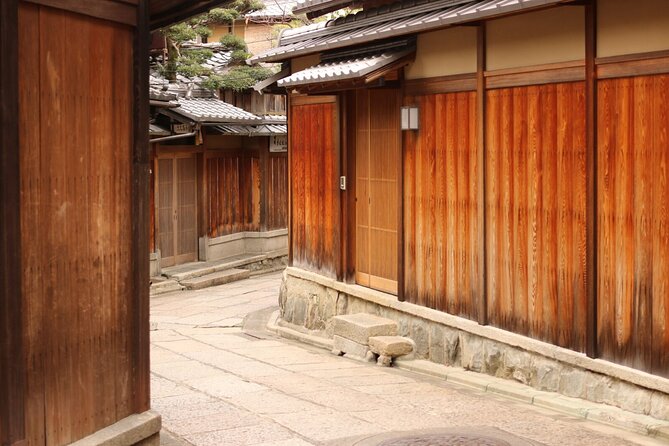
Ascending the stone steps leading to Kiyomizu-dera Temple, visitors are met with a sense of awe as the iconic wooden structure comes into view. This historic temple, founded in 778, offers not only stunning architecture but also a serene atmosphere that captivates all who enter its grounds.
Here are five aspects that make Kiyomizu-dera Temple a must-visit destination:
-
The breathtaking panoramic views of Kyoto from the temple’s wooden veranda
-
The sacred Otowa Waterfall where visitors can drink from three different streams for health, longevity, or success
-
The vibrant seasonal changes that transform the surrounding maple and cherry trees
-
The spiritual significance of the Jishu Shrine for love and matchmaking prayers
-
The intricate details of the temple’s construction, showcasing ancient Japanese craftsmanship.
Wooden Stage and Otowa Waterfall
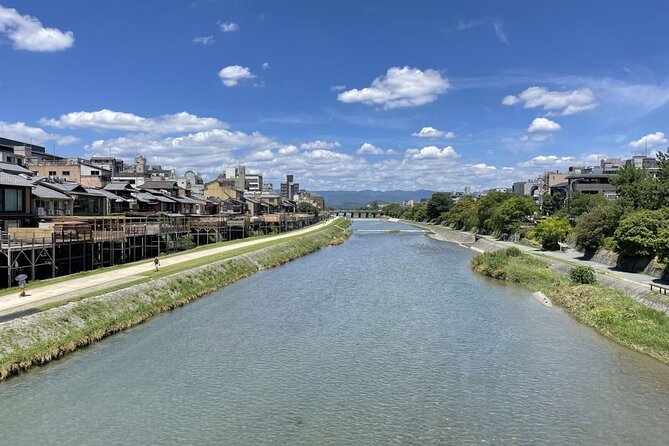
Visitors to Kiyomizu-dera Temple are drawn to the wooden stage and Otowa Waterfall, two iconic features that hold both cultural significance and natural beauty.
The wooden stage, known as the Kiyomizu Stage, offers breathtaking panoramic views of Kyoto city. This architectural marvel was constructed entirely without the use of nails, showcasing traditional Japanese craftsmanship. The stage symbolizes a leap of faith, as it’s said that those who survive a jump from it will have their wishes granted.
Below the stage lies the Otowa Waterfall, divided into three streams representing longevity, success, and love. Visitors can drink from these streams using cups attached to long poles, believed to bring them blessings in health, success, and love.
Tea Houses and Souvenir Shops
How do Tea Houses and Souvenir Shops enhance the cultural experience along the Kyoto Heritage Path?
Tea houses and souvenir shops play a vital role in enriching visitors’ journeys through the Kyoto Heritage Path. Here are some ways they enhance the cultural experience:
-
Immerse in Tradition: Visitors can savor matcha tea in authentic tea houses, experiencing centuries-old Japanese tea rituals.
-
Discover Local Crafts: Souvenir shops offer handcrafted items like pottery and fans, providing a glimpse into Kyoto’s artisanal heritage.
-
Taste Local Delights: Sample traditional sweets and snacks unique to Kyoto, adding a flavorful dimension to the cultural exploration.
-
Take Home Memories: Purchase souvenirs like lucky charms and kimono accessories to commemorate the visit and share with loved ones.
-
Interact with Artisans: Some shops host demonstrations, allowing visitors to witness skilled craftsmen at work, creating a memorable and educational experience.
Traditional Kyoto Architecture
Among the ancient streets and serene gardens of Kyoto, traditional architecture stands as a testament to the city’s rich cultural heritage. The historic buildings in Kyoto showcase exquisite craftsmanship and intricate wooden structures that have withstood the test of time.
From the iconic Kinkaku-ji Temple with its shimmering golden exterior to the charming machiya townhouses lining the narrow alleyways of Gion district, visitors are immersed in the beauty and elegance of traditional Kyoto architecture. Each building tells a story of Japan’s architectural evolution, blending elements of Zen Buddhism, Shintoism, and tea ceremony traditions.
The traditional wooden facades, sliding doors, tatami mat floors, and peaceful zen gardens create a harmonious atmosphere that transports visitors back in time to experience the essence of old Japan.
Frequently Asked Questions
Are There Any Restroom Facilities Along the Hiking Trails?
Yes, there are restroom facilities along the hiking trails. Visitors can expect convenient access to facilities throughout the journey. These amenities offer a comfortable experience for travelers exploring the picturesque Kyoto Heritage Path.
Can Visitors Touch or Interact With the Fox Statues?
Visitors can interact with the fox statues along the path. These statues hold symbolic significance in Japanese culture and touching them is considered a gesture of respect. It adds a deeper connection to the spiritual journey.
Is Photography Allowed Inside Kiyomizu-Dera Temple?
Photography is allowed inside Kiyomizu-dera Temple. Visitors can capture the stunning architecture and serene atmosphere. Remember to respect any signs or guidelines regarding photography to ensure the preservation of this historic site.
Are There Vegetarian or Vegan Food Options at the Tea Houses?
Vegetarian and vegan food options are available at the tea houses along the Kyoto Heritage Path. Visitors can savor traditional Japanese dishes made with plant-based ingredients, ensuring a delightful culinary experience during their journey.
Can Visitors Enter All the Traditional Kyoto Buildings Along the Path?
Visitors can’t enter all traditional Kyoto buildings along the path. Some may have restricted access or require reservations. It’s essential to check availability and guidelines beforehand to make the most of the experience.
The Sum Up
To sum it up, the Kyoto Heritage Path from Fushimi Inari Taisha Shrine to Kiyomizu-dera Temple offers a captivating blend of spirituality and natural beauty.
The iconic torii gates, fox statues, and scenic hiking trails of Fushimi Inari lead to the breathtaking views and serene atmosphere of Kiyomizu-dera.
Visitors are sure to be enchanted by the ancient traditions, tranquil landscapes, and traditional architecture that make this journey a truly mystical experience in the heart of Kyoto.
